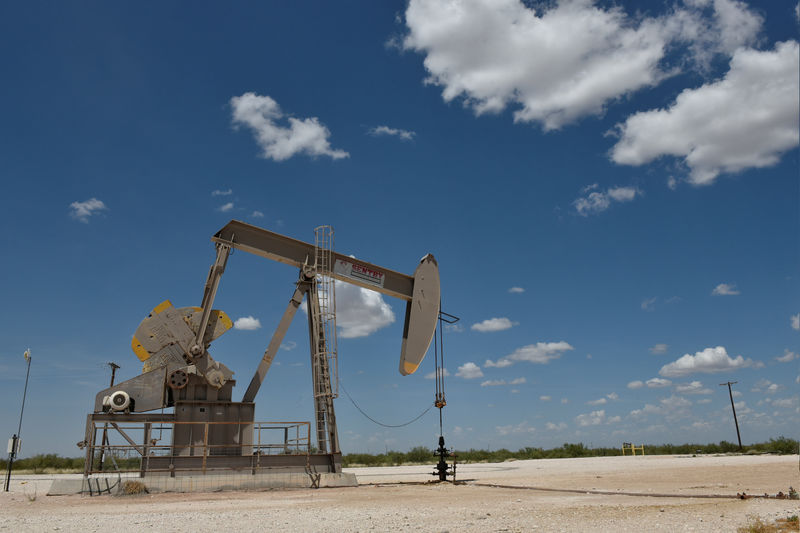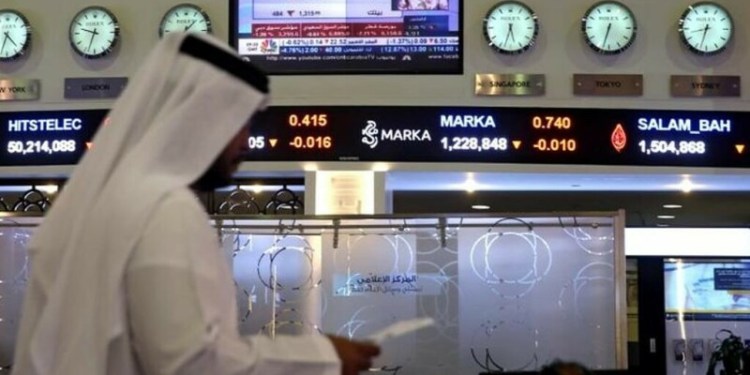 © Reuters. FILE PHOTO: A pump jack operates in the Permian Basin oil production area near Wink
© Reuters. FILE PHOTO: A pump jack operates in the Permian Basin oil production area near WinkBy Christopher Johnson
LONDON (Reuters) – Oil stabilized on Wednesday after one of its biggest falls for years, but remained under pressure from oversupply and concern that a slowing global economy would depress demand for fuel.
Benchmark was up 45 cents at $56.71 a barrel by 1020 GMT, after dropping 5.6 percent on Tuesday and at one point hitting a 14-month low.
U.S. light crude was 25 cents higher at $46.49, after plunging 7.3 percent in the previous session when it touched its lowest since August 2017.
Both benchmarks have fallen more than 30 percent since the beginning of October as crude supply from the Middle East, Russia and the United States has outstripped demand, filling oil tanks.
“The market is experiencing price carnage, maximum pain and considerable downside pressure,” said Robin Bieber, analyst at London brokerage PVM Oil. “The trend is down.”
Tuesday’s sell-off was encouraged by a sharp fall in world stock markets after signs that economic growth, and hence demand for energy, was slowing. There were also worries that higher U.S. interest rates could slow U.S. growth.
The U.S. Federal Reserve is expected to raise interest rates on Wednesday. The central bank is due to announce its decision at 2 p.m. EST (1900 GMT).
Adding to worries about oversupply, the American Petroleum Institute said on Tuesday that stocks rose unexpectedly last week, while gasoline inventories increased. ()
If the build in U.S. crude stockpiles is confirmed by U.S. government data on Wednesday, it will be the first increase in three weeks. [EIA/S]
The Organization of the Petroleum Exporting Countries and other oil producers including Russia agreed this month to curb output by 1.2 million bpd, equivalent to more than 1 percent of global demand, in an attempt to drain tanks and boost prices.
But the cuts will not happen until next month and production has been at or near record highs in the United States, Russia and Saudi Arabia.
Russian oil output is at a record 11.42 million bpd so far this month, an industry source told Reuters.
The U.S. government has said shale production should climb to over 8 million bpd for the first time by the end of December.
Global oil supply faces pockets of disruption.
In Libya, the state oil company declared force majeure at its largest oilfield. That came a week after the firm announced a contractual waiver on exports from the field following its seizure by protesters.
Fusion Media or anyone involved with Fusion Media will not accept any liability for loss or damage as a result of reliance on the information including data, quotes, charts and buy/sell signals contained within this website. Please be fully informed regarding the risks and costs associated with trading the financial markets, it is one of the riskiest investment forms possible.
Source: Investing.com




























